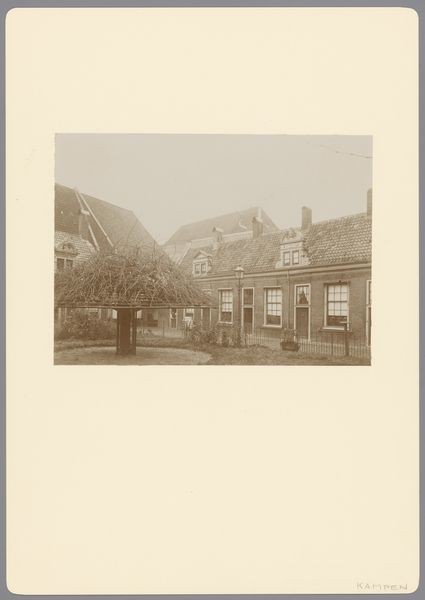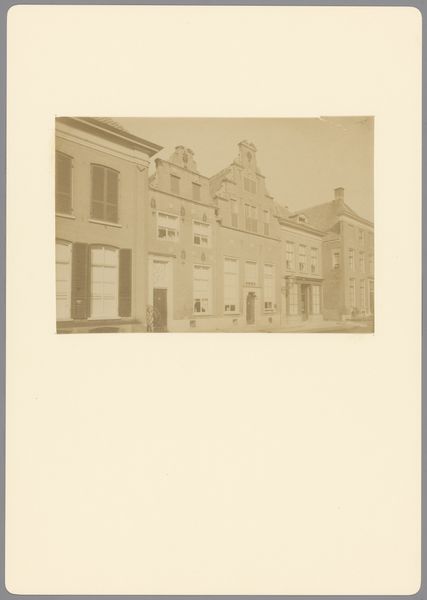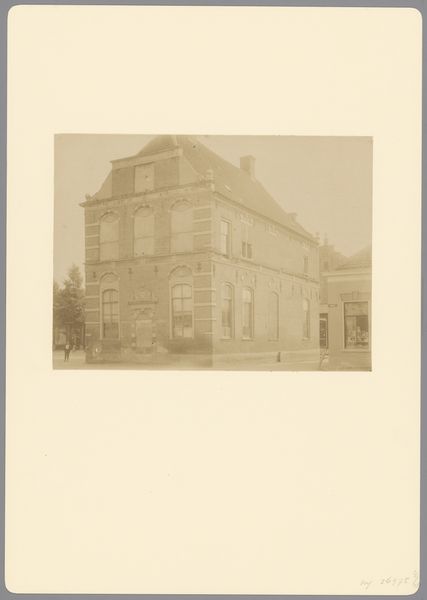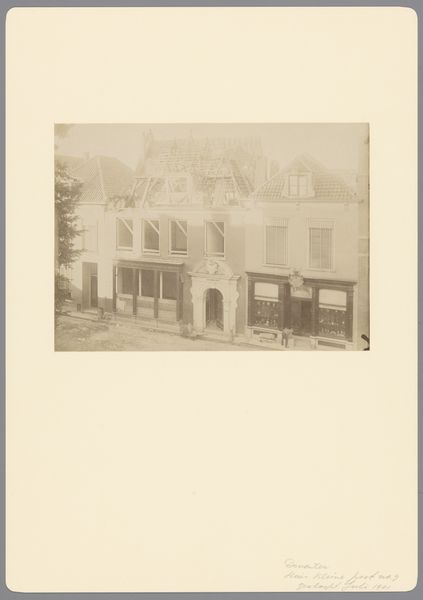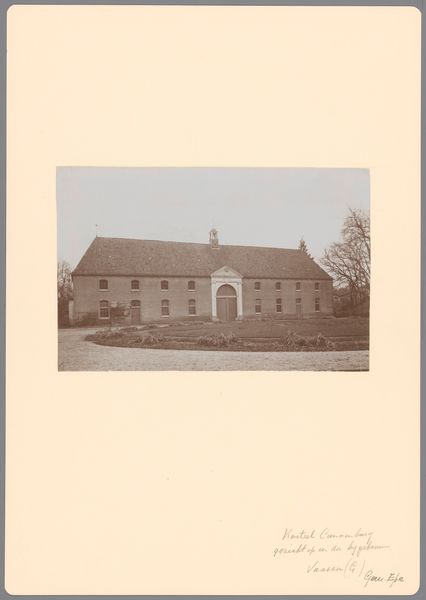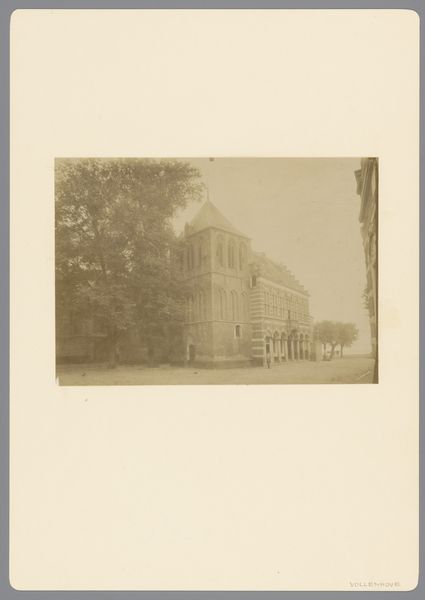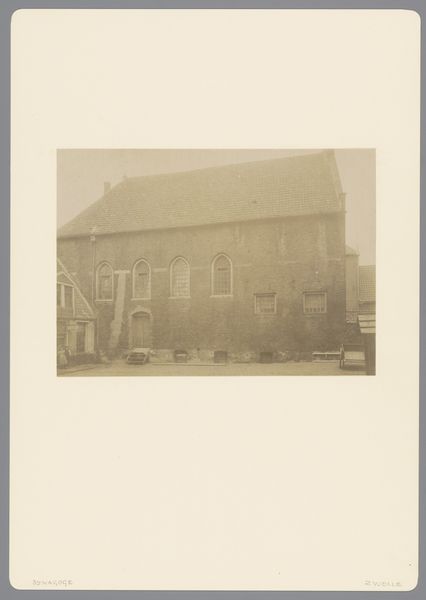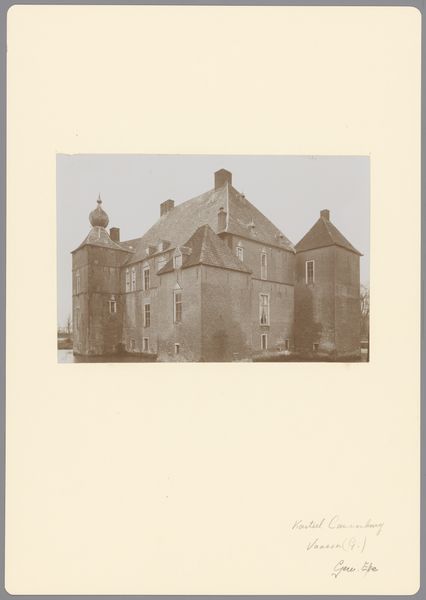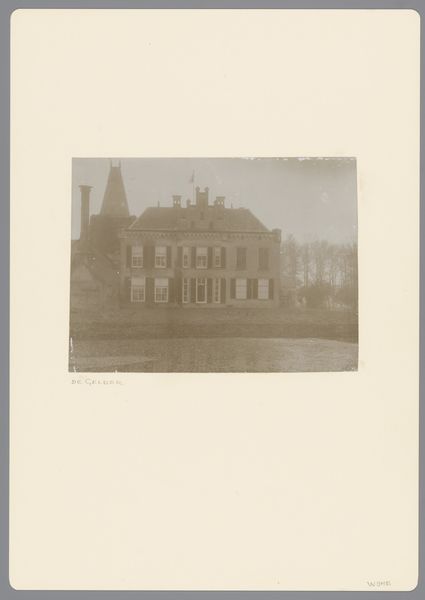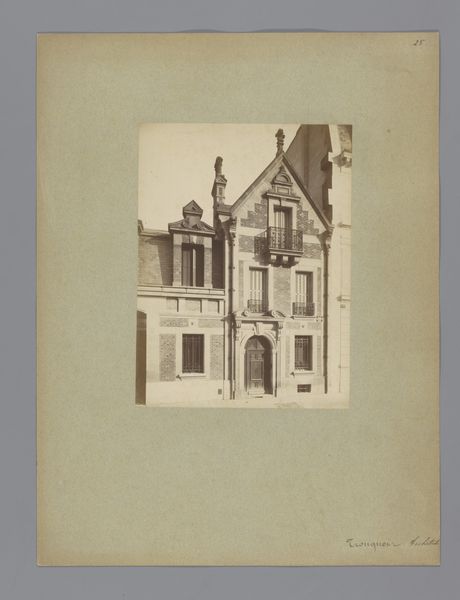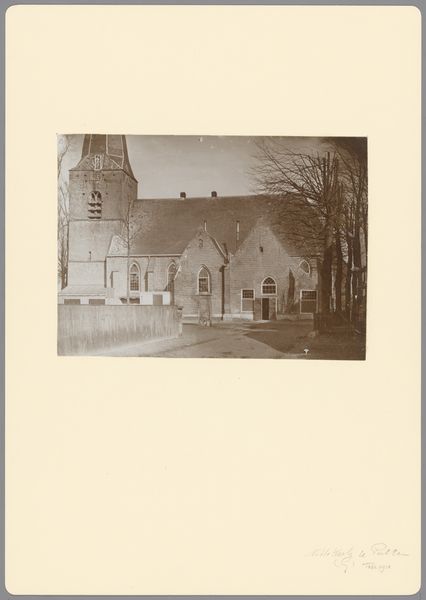
Dimensions: height 156 mm, width 224 mm
Copyright: Rijks Museum: Open Domain
Curator: Let's discuss this photograph, "Gezicht op Kasteel Cannenburgh te Vaassen," believed to have been created between 1890 and 1920 by an anonymous photographer from Monumentenzorg. Editor: Initially, I am struck by its muted tones and somewhat imposing, symmetrical façade; there is something about the balance of rectangular and geometric forms in the architecture that projects solemnity. Curator: Considering the time frame, the photo encapsulates a period when societal structures were incredibly hierarchical and deeply entrenched in power dynamics. Architecture, especially that of castles, played a pivotal role in visually asserting social dominance and class distinction. The castle, as captured, symbolizes the privileges and control that a small, elite group had over the rest of society. Editor: I agree. I see how one can analyze the imposing structure of the castle itself as a form of visual language. Its scale, solidity, and formal organization broadcast ideas about permanence and order. Notice the arrangement of windows; each a small framed image, unified in their formation but suggestive of different stories held within those walls. Curator: Absolutely, and examining the lone figure standing on the steps adds a human element, yet reinforces that power dynamic. The figure's insignificance in contrast to the imposing edifice further suggests a statement on individual agency versus institutional authority within that specific socio-political frame. Editor: Now, consider how the texture of the brick and the patterned roof contributes to the overall reading. Those rough and coarse features give it depth; they communicate age and solidity through strictly material means. These textures work to amplify the statement on permanence we've been discussing. Curator: That's a great point. The rough textures serve to naturalize the dominance projected by the architecture. Reflecting on it through the lens of power dynamics in gender and class, one might ask how such representations perpetuate norms of privilege and marginalization that continue to influence the distribution of resources. Editor: It seems through our discussion that what began as what seemed to me to be purely a geometric formal exercise, becomes a loaded representation through social context. Curator: Yes, by engaging in discussions we illuminate the work and enable critical consideration.
Comments
No comments
Be the first to comment and join the conversation on the ultimate creative platform.
